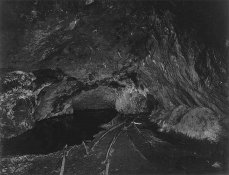darinwc
Subscriber
OK, Ive made my first 11x14 prints from 35mm negatives.
White spots from dust on the negative really stand out on this size enlargement.
So I went to the photo store and they reccomended to get a set of spotting pens instead of ink. (ouch the pens were $35 vs $5 for the ink!)
So I'm trying out the pens on some extra prints and it seems to be much harder than it should be. here are my issues:
-the pens leave a 'drop' of ink at the end of the stroke. The 'drop' of ink seems darker than what the pen is labeled with. So I could 'dab' the pens on the spots, but places where there is a white line from a fiber, I guess i will have to use a cotton swab to soak up the drop at the end.
-the ink is translucent. This is a real pain, cause if I miss the white spot at all, it adds density to the surrounding area. I end up with a dark dot right next to the white dot. This happens even if use a lighter shade than the surrounding area. Again it adds density.
OK I was getting really frustrated. Any advice will be appreciated.
White spots from dust on the negative really stand out on this size enlargement.
So I went to the photo store and they reccomended to get a set of spotting pens instead of ink. (ouch the pens were $35 vs $5 for the ink!)
So I'm trying out the pens on some extra prints and it seems to be much harder than it should be. here are my issues:
-the pens leave a 'drop' of ink at the end of the stroke. The 'drop' of ink seems darker than what the pen is labeled with. So I could 'dab' the pens on the spots, but places where there is a white line from a fiber, I guess i will have to use a cotton swab to soak up the drop at the end.
-the ink is translucent. This is a real pain, cause if I miss the white spot at all, it adds density to the surrounding area. I end up with a dark dot right next to the white dot. This happens even if use a lighter shade than the surrounding area. Again it adds density.
OK I was getting really frustrated. Any advice will be appreciated.














